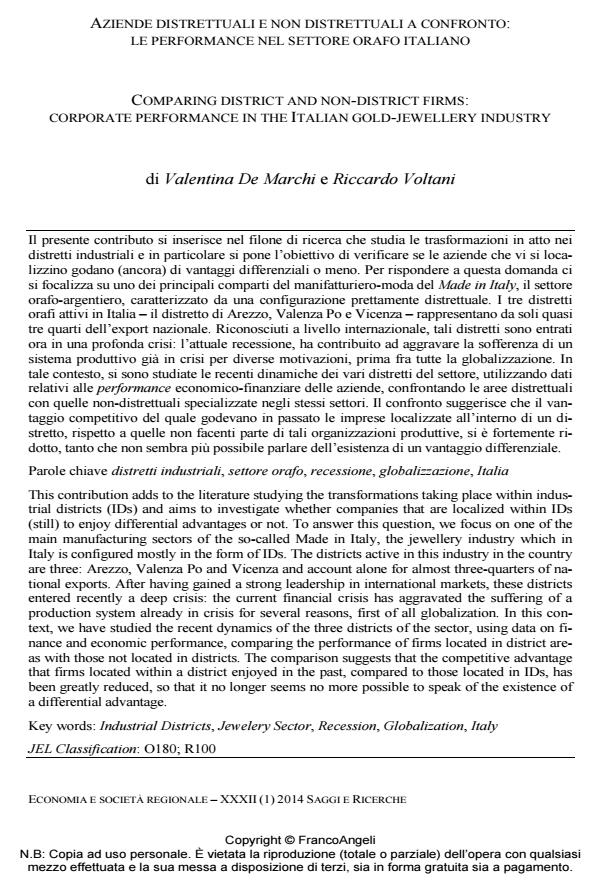Comparing district and non-district firms: corporate performance in the italian gold-jewellery industry
Journal title ECONOMIA E SOCIETÀ REGIONALE
Author/s Valentina De Marchi, Riccardo Voltani
Publishing Year 2014 Issue 2014/1
Language Italian Pages 24 P. 163-186 File size 774 KB
DOI 10.3280/ES2014-001014
DOI is like a bar code for intellectual property: to have more infomation
click here
Below, you can see the article first page
If you want to buy this article in PDF format, you can do it, following the instructions to buy download credits

FrancoAngeli is member of Publishers International Linking Association, Inc (PILA), a not-for-profit association which run the CrossRef service enabling links to and from online scholarly content.
This contribution adds to the literature studying the transformations taking place within industrial districts (IDs) and aims to investigate whether companies that are localized within IDs (still) to enjoy differential advantages or not. To answer this question, we focus on one of the main manufacturing sectors of the so-called Made in Italy, the jewellery industry which in Italy is configured mostly in the form of IDs. The districts active in this industry in the country are three: Arezzo, Valenza Po and Vicenza and account alone for almost three-quarters of national exports. After having gained a strong leadership in international markets, these districts entered recently a deep crisis: the current financial crisis has aggravated the suffering of a production system already in crisis for several reasons, first of all globalization. In this context, we have studied the recent dynamics of the three districts of the sector, using data on finance and economic performance, comparing the performance of firms located in district areas with those not located in districts. The comparison suggests that the competitive advantage that firms located within a district enjoyed in the past, compared to those located in IDs, has been greatly reduced, so that it no longer seems no more possible to speak of the existence of a differential advantage.
Keywords: Industrial Districts, Jewelery Sector, Recession, Globalization, Italy
Jel codes: O180; R100
Valentina De Marchi, Riccardo Voltani, Aziende distrettuali e non distrettuali a confronto: le performance nel settore orafo italiano in "ECONOMIA E SOCIETÀ REGIONALE " 1/2014, pp 163-186, DOI: 10.3280/ES2014-001014